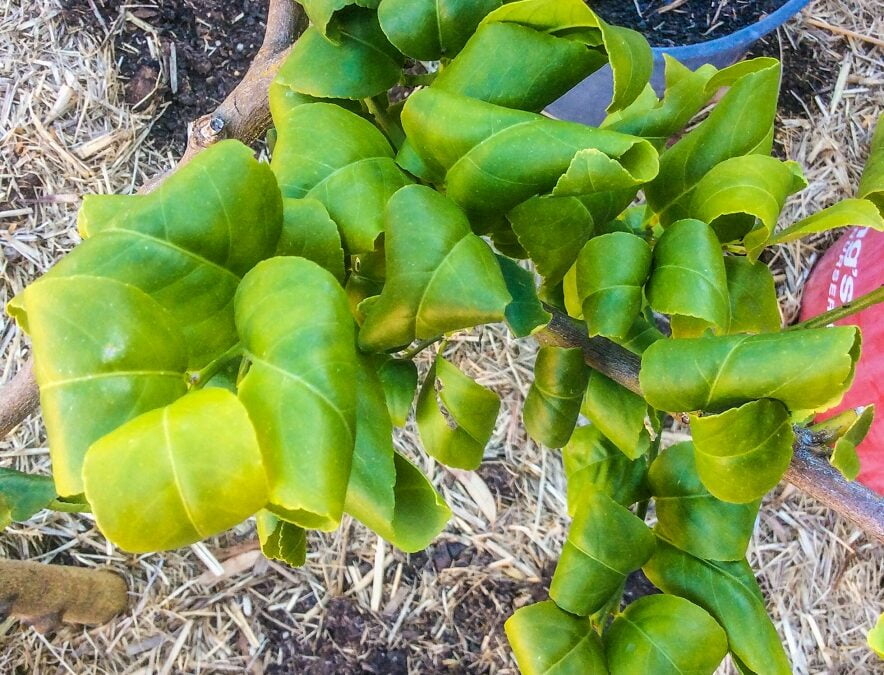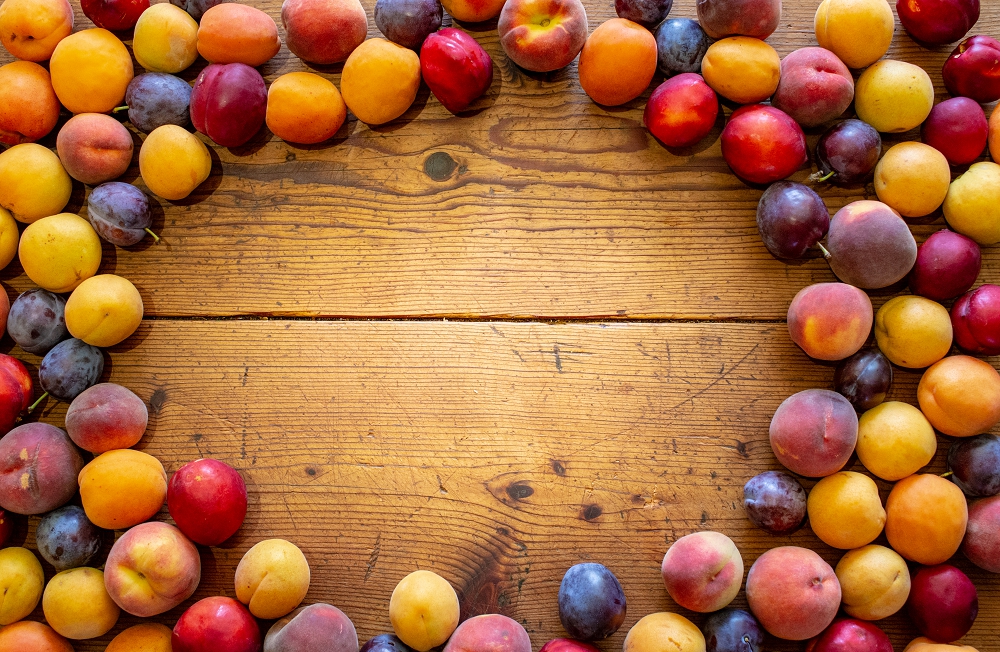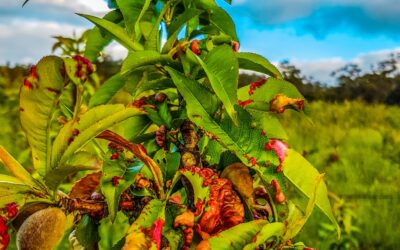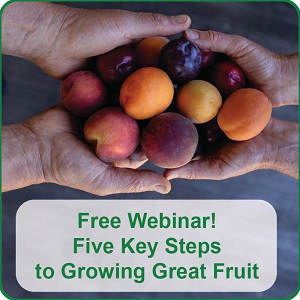Citrus leaf curl can be caused by stress or pests or disease, and it’s a process of elimination to identify and fix.
Whatever the cause, most citrus leaf curl is cause for concern. Whether you’re growing lemons, oranges, mandarins, limes, grapefruit, or finger limes, understanding why the leaves are curling is the first step toward fixing the problem.
Estimated reading time: 5 minutes
Identifying the cause of citrus leaf curl
We love growing citrus at our place because they’re an important part of our food security strategy but citrus leaf curl can be a big problem. Including citrus in the garden gives us fresh fruit when the deciduous fruit (stone fruit, apples, and pears) are out of season so we make a real effort to keep the citrus trees healthy.
They’re also delicious and provide a great dose vitamins and minerals when we need them most.
We grow lemons, oranges, mandarines, two types of lime, grapefruit, and cumquats. As you can imagine, we’ve seen our fair share of curly citrus leaves in our garden!
What climate do citrus trees prefer?
Our climate is pretty dry most years, with hot summers and cold winters. The summers suit citrus, the winters—not so much.
Over the years, we’ve also helped many Grow Great Fruit members diagnose their citrus leaf problems. That means we know there’s no single cause.
Instead, it’s usually a process of elimination—looking at the tree’s growing conditions, checking for pests, and considering the season.
Here’s what might be going on with your citrus tree and how to fix it.
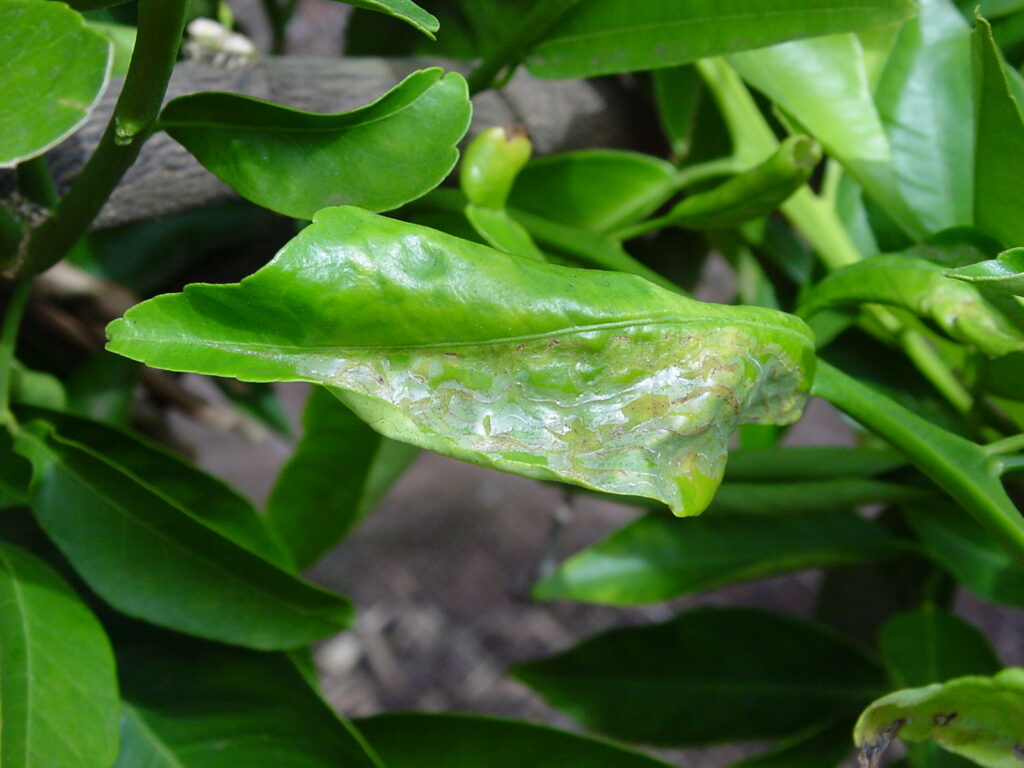
Pests that cause citrus leaves to curl
Several sap-sucking pests can cause citrus leaf curl, especially on young growth.
- Aphids: These tiny pests cluster on new shoots, causing leaves to distort and curl. They also leave behind sticky honeydew, which can lead to sooty mould.
- Leaf miners: More common in warm climates, citrus leaf miners burrow through young leaves, leaving silvery trails and causing the edges to curl.
- Psyllids: In the US, Asian citrus psyllid is a major concern because it spreads Huanglongbing (citrus greening disease). While this disease isn’t in Australia, psyllids can still cause damage by feeding on leaves.
What to do:
Try to identify what pest might be causing the damage. In our garden, we always check the youngest leaves first when we suspect pests. If you see tiny bugs or silvery trails, that’s a strong clue.
Pruning affected leaves and encouraging natural predators like ladybugs are the first port of call. As a last resort, you might need to use an organic sprays (like neem oil) but expert citrus growers urge caution when it comes to sprays. It’s easy to do more harm than good by accidentally killing predator insects.
Weather stress and water issues that cause citrus leaves to curl
Citrus trees are pretty hardy, but they don’t love extremes—which is tricky because our farm has both cold winters and hot, dry summers.
At our place, we’ve experienced both drought and flood conditions. We’ve seen citrus leaf curl, caused by both heat stress and lack of water. We know our Grow Great Fruit members in different climates have struggled with the same issues.
- Heat stress: In extreme heat, citrus trees may curl their leaves inward to reduce moisture loss.
- Underwatering: Dry soil can cause leaf curling, yellowing, and eventually leaf drop. This is a common issue in our climate during summer, especially for trees in pots.
- Overwatering or poor drainage: Waterlogged roots can’t take up nutrients properly, leading to weak growth, yellowing, and curling.
👉 More likely in: Hot, dry regions like inland Australia and the southwestern US, but overwatering can be an issue anywhere.
What to do:
We’ve found that deep watering once or twice a week works best for citrus, especially in extreme heat. If your tree is in a pot, check the soil moisture regularly.
A “living mulch” of permanent understory plants is always best for the soil and trees, even in pots. However, mulching around the base will also help to keep roots cool and prevent moisture loss.
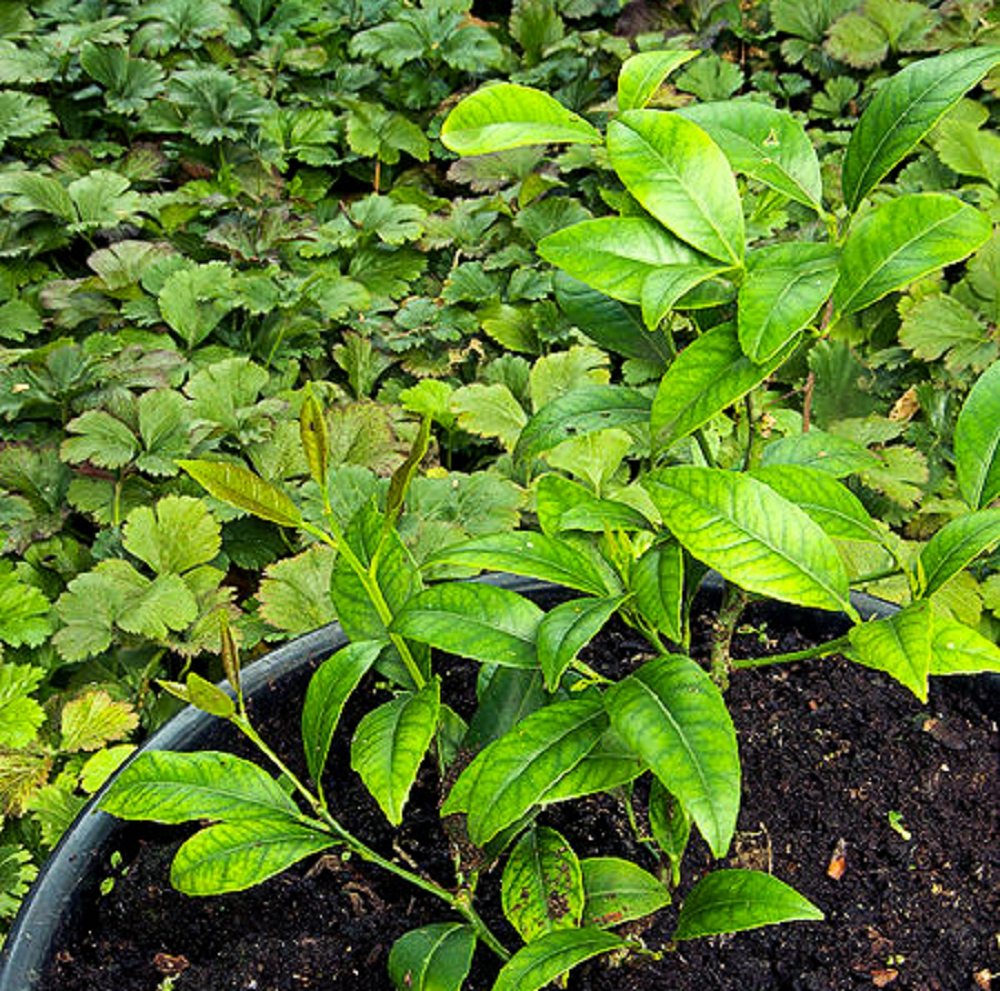
Nutrient deficiencies (or excesses!)
Citrus trees are heavy feeders, and nutrient imbalances can lead to citrus leaf curl, yellowing, or weak growth.
- Nitrogen imbalance: Too little nitrogen can cause yellowing leaves, while too much can lead to excessive soft growth, which is more prone to curling from pests or weather stress.
- Potassium deficiency: Can lead to weak, curled leaves with a scorched appearance.
- Magnesium deficiency: Causes yellowing between leaf veins, sometimes alongside curling.
👉 More likely in: Older trees that haven’t been fertilized properly or those in sandy or nutrient-poor soils.
What to do:
Citrus are quite heavy feeders, which means they love getting fed! We feed our citrus trees with lovely rich compost and some aged chicken manure once or twice a year. We encourage our members to do similar.
Citrus leaf curl disease – the less common cause
Fungal or bacterial diseases are a less frequent cause of citrus leaf curl, but we have seen cases among our members.
- Citrus canker: Causes raised lesions on leaves and fruit, sometimes leading to distortion. More common in humid climates.
- Root rot (Phytophthora): Can cause wilting, yellowing, and curling, often linked to poor drainage.
👉 More likely in: Overwatered or flooded soils, warm, humid regions like subtropical regions of Australia, warmer parts of the US such as Florida (for citrus canker), and areas with heavy, poorly drained soils.
What to do:
The solution to fungal diseases is all about the soil! Root rot is best managed by improving drainage and avoiding overwatering. We recommend adding regular doses of organic matter like compost or aged manure. Occasional woody mulch can also make a big difference. Other strategies include pruning the tree to improve airflow and avoiding overhead watering.
What about leaf curl in other fruit trees?
Citrus trees aren’t the only ones that suffer from leaf curl. Many different fruit trees experience curly leaves from a range of causes. You might have encountered peach leaf curl, a fungal disease that distorts and thickens leaves in early spring.
Apples and plums can also develop curled leaves due to insects, water stress, or nutrient deficiencies.
We’ve helped many of our Grow Great Fruit members troubleshoot leaf curl in different fruit trees, and while the causes vary, the key is always early diagnosis.
Keeping your citrus trees healthy
Curly leaves on citrus trees aren’t always a major problem, but they are a sign that something needs attention. Our citrus masterclass covers everything you need to keep your citrus trees healthy.
Checking for pests, adjusting watering, and ensuring proper nutrition can go a long way in keeping your citrus trees healthy. And if you notice yellowing leaves, they may have a different cause—so be sure to look at the full picture when diagnosing your tree’s health!
Related Articles
Do you have apple tree leaf curl?
Curly leaves in your apple trees are usually caused by insects, but weather or nutrition could also be to blame.
Leaf Curl Treatment
Curly leaves on fruit trees can have multiple potential causes, for example, fungal disease, insects, or even nutritional issues.
Peach Leaf Curl
Peach tree leaf curl disease is one of the main causes of curly leaves on your peach and nectarine trees, but it’s usually preventable.

